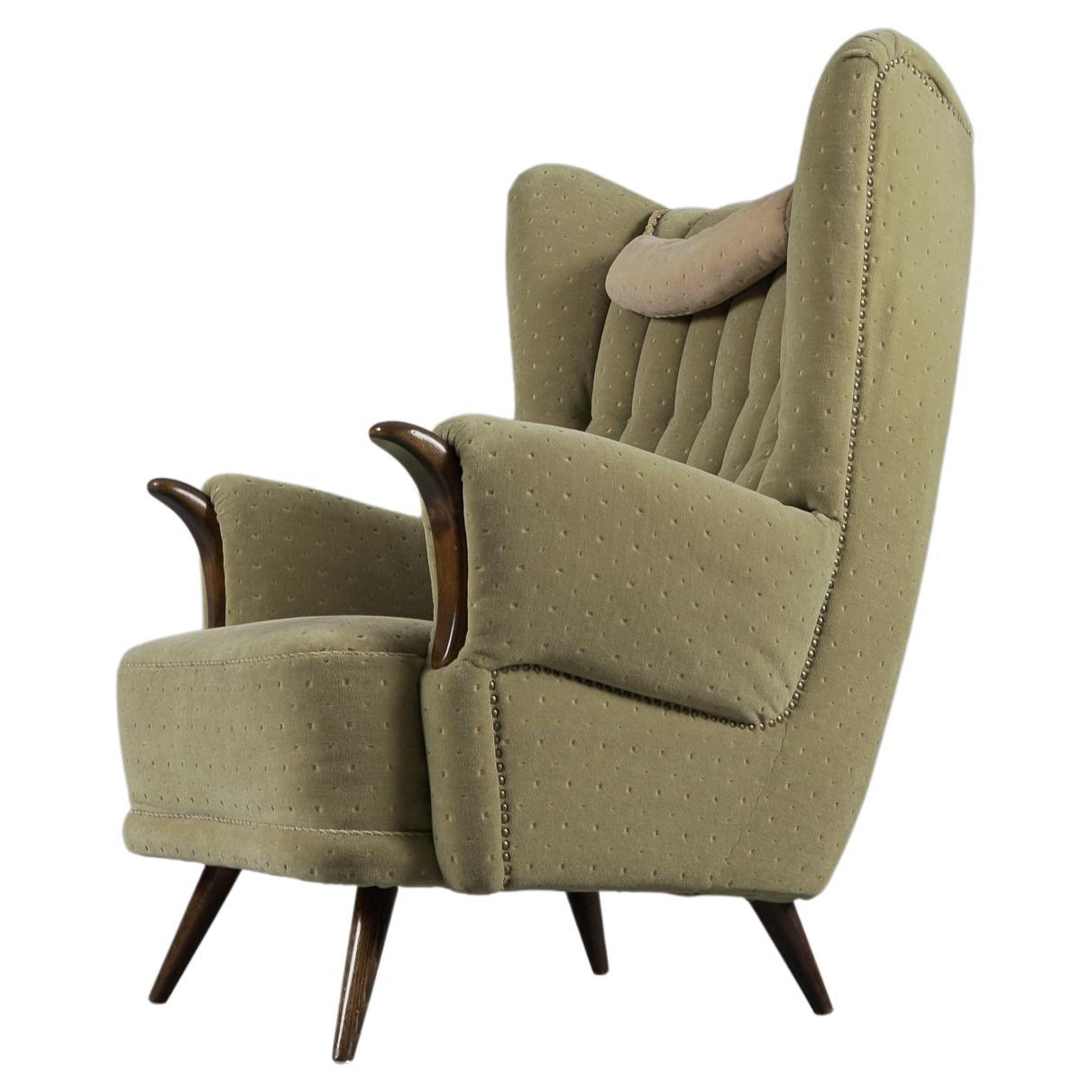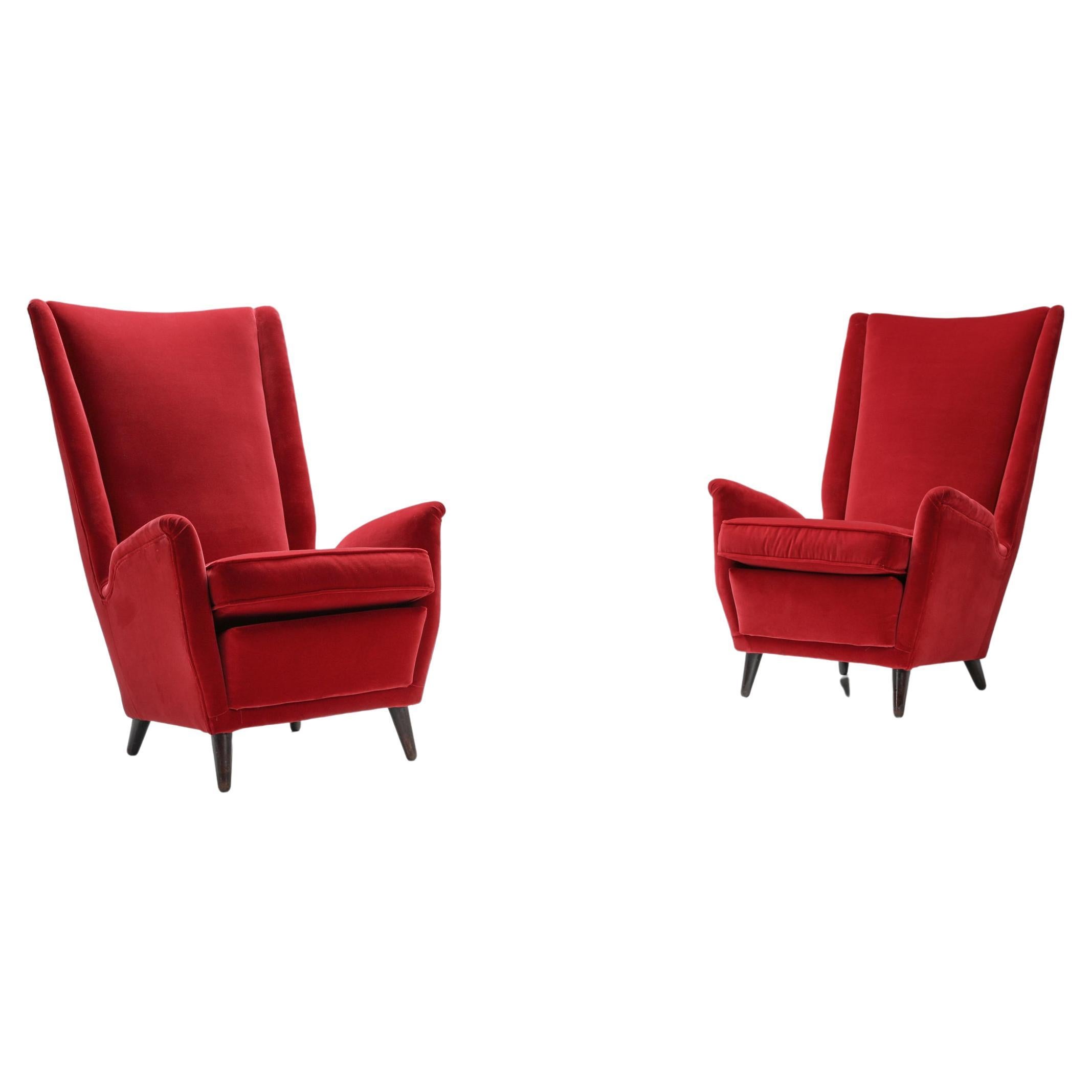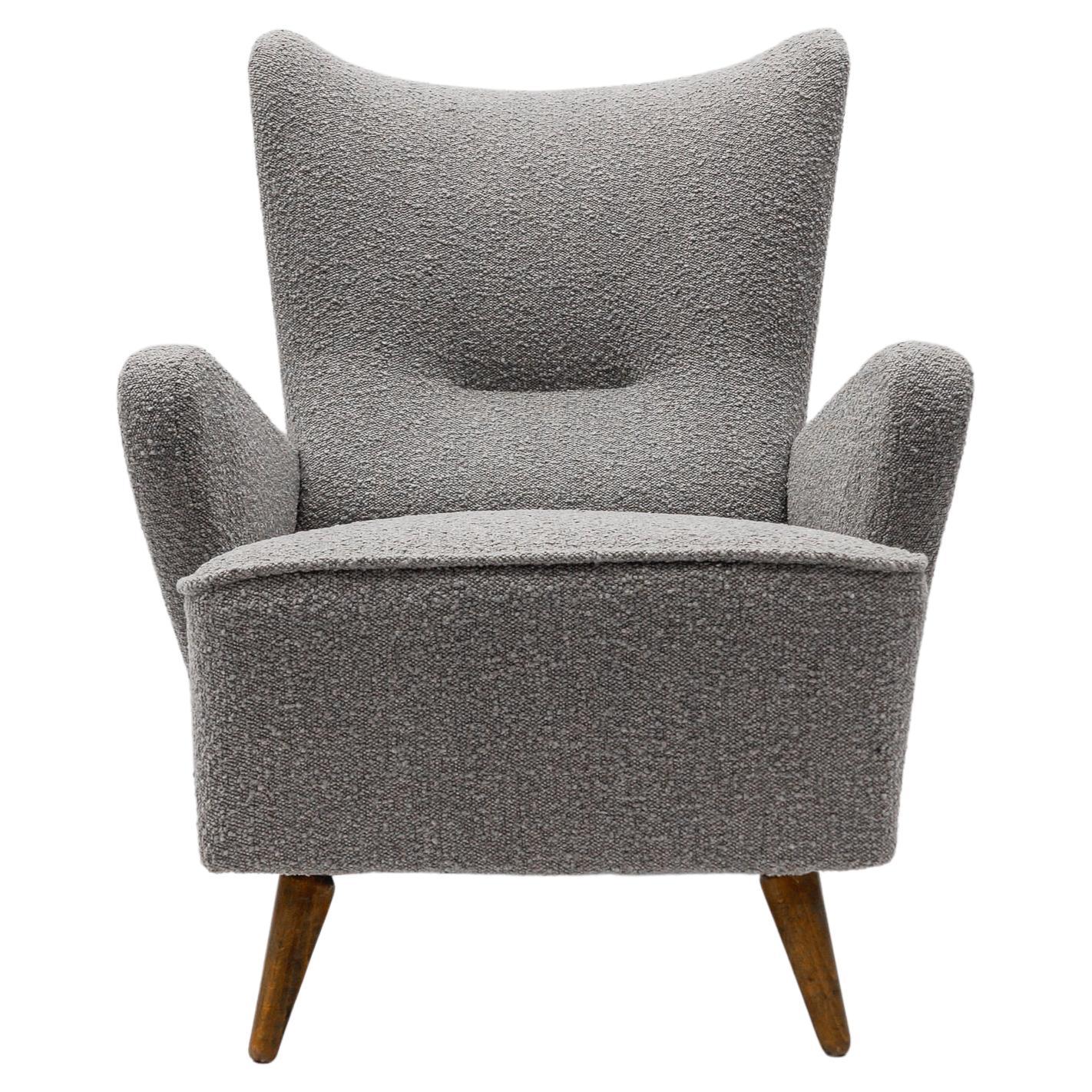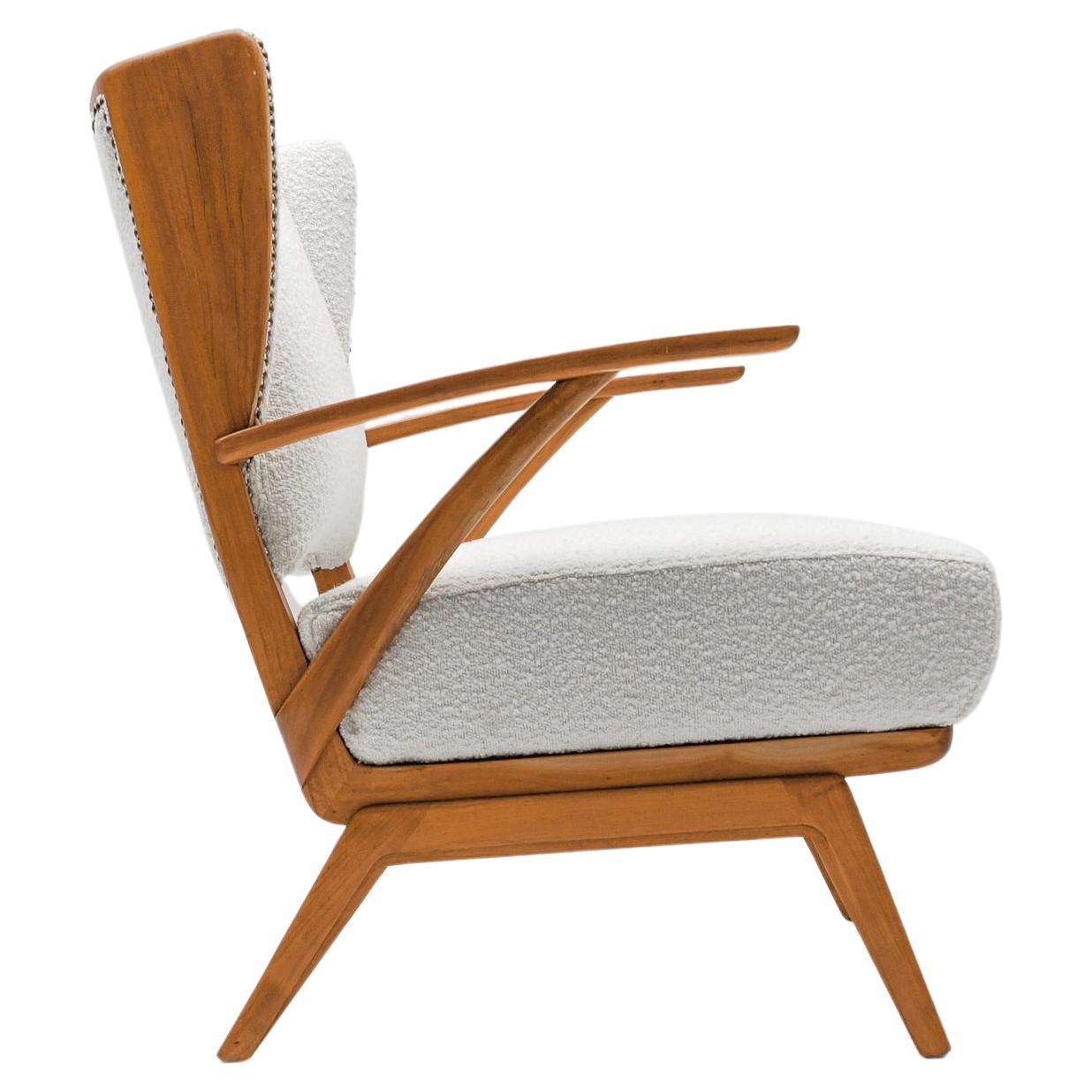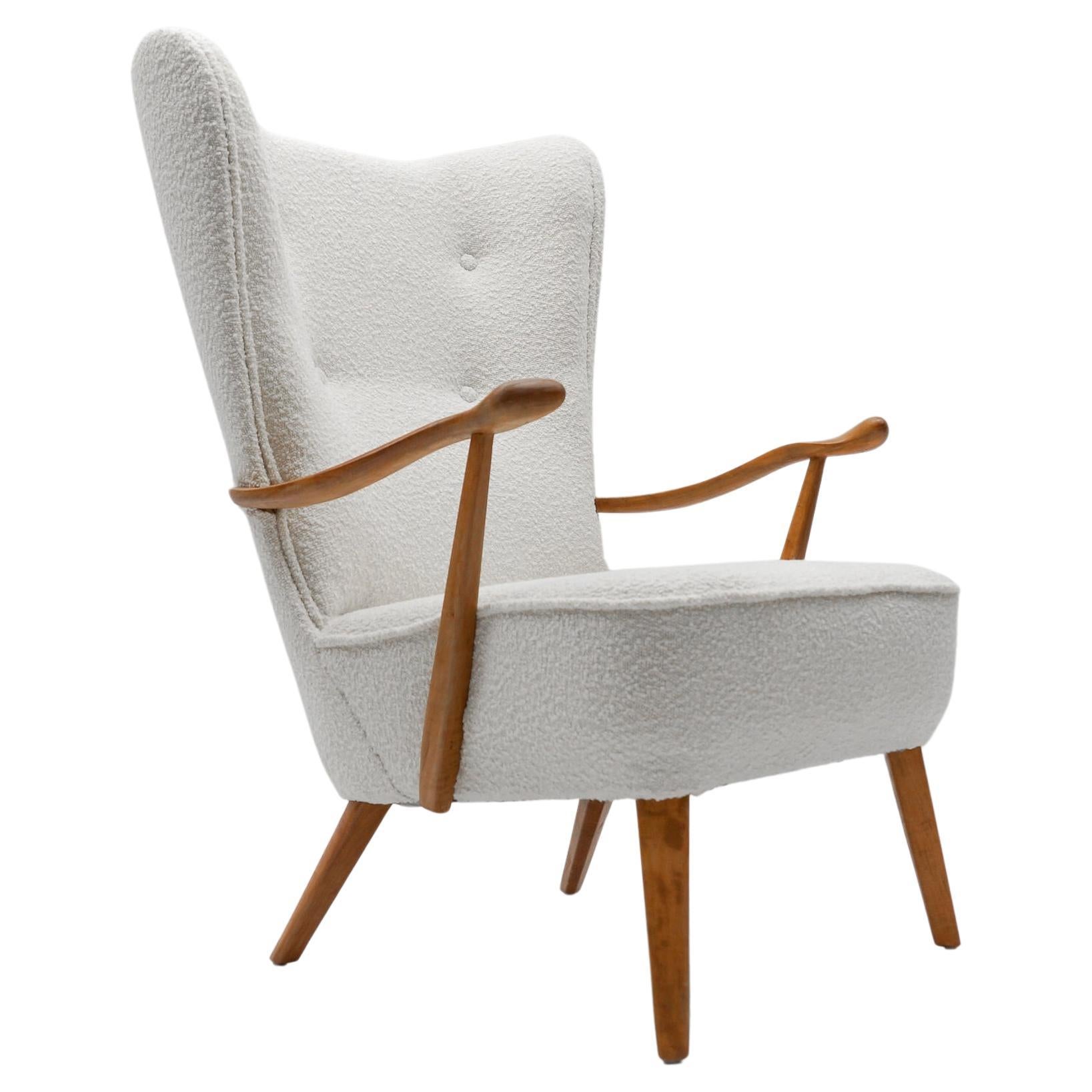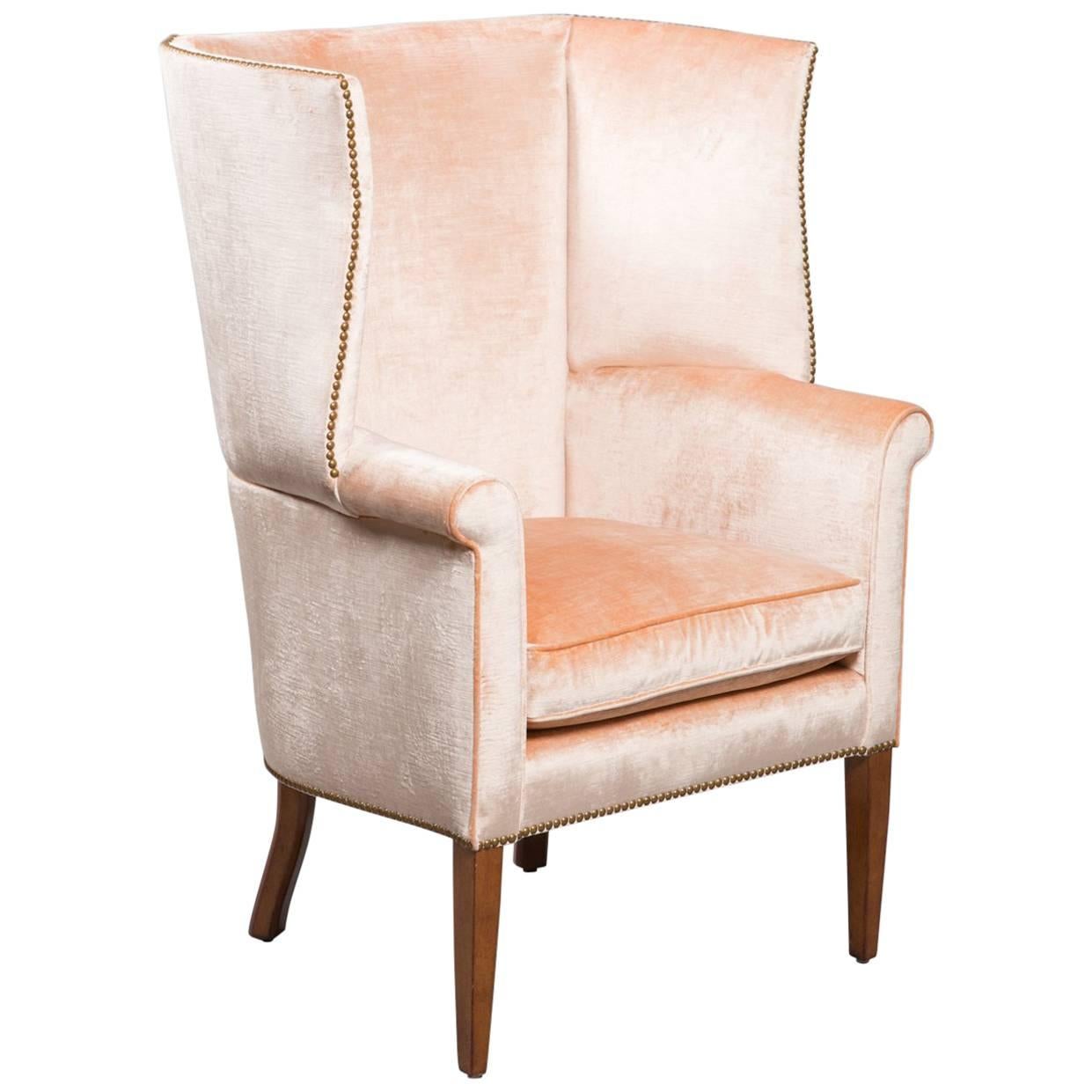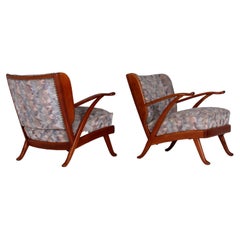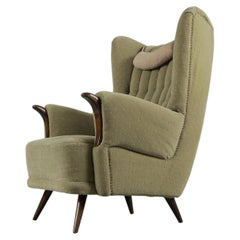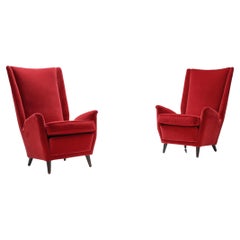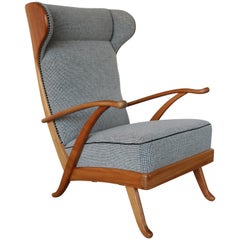
Wingback Armchair by Karl Nothhelfer for Schörle & Gölz, 1950s
View Similar Items
1 of 12
Wingback Armchair by Karl Nothhelfer for Schörle & Gölz, 1950s
About the Item
- Creator:Karl Nothelfer (Designer)
- Dimensions:Height: 39.38 in (100 cm)Width: 27.56 in (70 cm)Depth: 31.5 in (80 cm)Seat Height: 15.75 in (40 cm)
- Style:Mid-Century Modern (Of the Period)
- Materials and Techniques:
- Place of Origin:
- Period:
- Date of Manufacture:1950
- Condition:
- Seller Location:Nürnberg, DE
- Reference Number:1stDibs: LU3957311930013
You May Also Like
- Karl Nothhelfer very rare SET of 2 Wingback Armchairs & Sofa 1950s solid CherryLocated in Kumhausen, DEjust beautiful SET of Sofa & 2 Wingback Armchairs by Prof. Karl Nothelfer - Designed in 1957 maker: Schörle & Gölz in Stuttgart - Bad Cannstatt solid Cherry Wood new upholstery and fabrics in 1998 according to last owner ( since then just in use for 2 years so upholstery is perfect ! ) Seatrests can be removed - and fixed by clips on belts - high class - measurements: easy chair is 70cm wide ~ sofa is 178cm wide both: seating height 40cm ~ seating depth: 57cm condition - all firm and in very good condition - no damages furniture have fully been accurately cleaned :: - 3 steps: A: air pistol - B: industrial hoover - C: latest Kärcher "wash&hoover" technology - woods have been polished several times note: please ask for shipping quote by sending us your postcode/destination Prof. Karl Nothelfer * 14 June 1900 ~~ + 20 May 1980 Since the beginning of the 15th century, the Nothelfer family of carpenters has been continuously resident in the former town of Überlingen without interruption. Every carpenter at that time mastered all the possibilities of woodworking: so did the Nothelfer. They could carpenter, even carve altars and figures, and set them in gold, silver and paint. (churches in Owingen and Hödingen]. Some family members lived and worked and worked in Hedingen or Hödingen,like today the jubilarian Karl Nothelfer (this in 1975). His father, Karl Anton Nothelfer, as the eldest of seven siblings, was able to take over his father's carpentry business in Überlingen. Karl Anton Nothelfer, the eldest of seven siblings, was unable to take over his father's carpentry business in Überlingen. He instead moved to the industrial town of Singen with his young wife Rosalie, née Hanner, from the from Hohenzollern in 1896 and moved to the former Poststraße and founded his own carpenter's workshop. He had a highsense of quality and form and was already a member of the German Werkbund before 1914. Karl Nothelfer and his three siblings grew up in such air. After attending school and the secondary school in Singen, the young Karl learned the carpenter's trade in his father's workshop then moved on to the Badische Landes-Kunstschule in Karlsruhe, where he studied architecture. At that time the well-known furniture professor also worked there Fritz Spannagel, born in Freiburg in 1891, who settled in 1938 at Ittendorf Castle near Meers- burg (died 1957). In 1928, the gifted young architect received a teaching assignment at the at the Karlsruhe School of Art, but followed his teacher Spannagel to Berlin in the same year. Berlin. Here he worked from 1928-1945 as a teacher - appointed professor in 1931 - at the Berlin Tischler-Schule, the later Bauschule für Raumgestaltung. The furniture he created in Berlin became internationally known through many exhibitions and lectures. nationally known and influential. His furniture creations ushered in a new era in German and a new era in German and European furniture design. At the world exhibition in Paris 1937 Prof. Nothelfer was awarded the Golden Medal for his work in the furniture sector. for his work in the furniture sector. A first summary and balance of his work on furniture is given in his standard work 1942 published standard work "Das Sitzmöbel", the first compendium of its kind in the world. world. In 1950 he published his second work "Furniture". Both books and a series of brochures were published by Verlag Otto Maier, Ravensburg. Karl Nothelfer continued to work intensively on the design of seating furniture in the years after 1945. In 1950 he succeeded in the important invention of the two-legged skid-base chair, which has been orthopedically - anatomically tested thousands of times - has become accepted all over the world today. Even the most distinguished American furniture companies such as Miller or Knoll-International use the skid as the main theme for desks and chairs. At the same time, N. had a groundbreaking in the redesign of German school furniture and seating for industry. industry. He succeeded in adapting his furniture forms, which originated in wood and handicraft, to the modern technical modern technical possibilities of the industry. He thus became the great refor- of schoolroom furnishings. The architect Nothelfer thinks about himself, that he made his main contribution in the field of seating furniture, although this was not was not really his profession. After the war, Prof. Nothelfer, like so many others, had to start all over again. He settled settled in his home town of Lake Constance in Hödingen in 1945 as a freelance architect and was and was involved in all areas of construction in the years after the war. As early as 1935, he had given many the example of American prefabricated buildings and recommended serial house and recommended it at a time when no one in Germany was even thinking about mass production. Now he developed he developed several types of mass-produced houses, which were manufactured in Baiersbronn. of which more than 800 houses were built in France alone (types Paris, Provence, Normandie). were built. At that time [1946], as part of the reparations in Strasbourg, there was an exhibition of houses with Swedish, Danish, and French designs. with Swedish, Danish, Finnish, English and German houses, where the French occupation for which 6 different types were sent from the French occupation zone, the Nothelfer's house type was considered the top of this exhibition. Karl Nothelfer was also involved in the development of chipboard. In 1946, together with others in Munich, he founded the first magazine "Bauen und Wohnen" ("Building and Living") after the war and remained its co-editor for many years. co-editor of this magazine for many years. By presenting his own work, he has here interpreted what the essence of the magazine wanted to be: Building, in order to live in it, in order to live as a human being and humanly in the built. Karl Nothelfer planned his houses furniture ground plan, from the need for living. In 1948 he was appointed honorary senator of the State Building school in Holzminden. Karl Nothelfer did not build much in Singen. The first post-war house was Haus Fahr on the slope of the Hohentwiel (Domäne); the building material came from a demolished log house that a French officer had built for himself on the Schie- nerberg. nerberg. In 1952, he also built the administration building of the aluminum rolling mill in Singen. rolling mills in Singen, with relief and wall painting by C. G. Becker. In Überlingen he built In Überlingen he built, among others, the Buchinger Sanatorium, the Riese+ Hähnel radio house and various reconstructions in the old town: Haus Kitt with the Glockenspiel, the Haus mit dem Bacchus in the Überlingen village, the Dolphin Fountain in Hödingen (1975). Probably the most beautiful Haus Nothelfers, the Haus Himmelheber, stands in Baiersbronn-Tonbach. On the airfield Mengen, Nothhelfer built the casino building with the 30 square meter faience painting Ikarus by C. G. Becker. In 1954 he founded a second office with architect Hans Schwingen in Düsseldorf. Office, which primarily fertilized the housing construction, true to the motto:from the inside to planning from the outside. The Minister of Housing awarded a prize to the best social housing in North Rhine- Westphalia; it was from the Nothelfer+Schwingen studio in Düsseldorf. Also the idea of new idea of home ownership was also promoted by Nothelfer+Schwingen. promoted by Nothelfer+Schwingen. On the occasion of the red jubilee of the law about condominium ownership Nothelfer gave a lecture in Essen in 1961 on condominium ownership in Europe (published as a brochure). published as a brochure]. From Düsseldorf, among many others, in the silk city...Category
Vintage 1950s German Mid-Century Modern Living Room Sets
MaterialsFabric, Cherry
- Large Green Italian Wood & Fabric Wingback Armchair, 1950sLocated in Nürnberg, BayernWhat a great design, we couldn't see ourselves enough. Measures: width 74 cm Depth 75 cm Height 109 cm Seat height 42 cm.Category
Vintage 1950s Italian Mid-Century Modern Armchairs
MaterialsFabric, Wood
- Italian Wingback Armchair in Red Velvet by Gio Ponti, 1950sBy Gio PontiLocated in Antwerp, BEItalian wingback armchair in red upholstery by Gio Ponti. Gio Ponti high-back lounge chair with a slightly titled backrest that supports the seating posture, making them very comfort...Category
Vintage 1950s Italian Mid-Century Modern Armchairs
MaterialsBrass
- Large Grey Boucle Fabric Wingback Armchair, Italy, 1950sLocated in Nürnberg, BayernAwesome large wingback armchair. New upholstery in grey Boucle fabric. Seat height 43cm, total height 99cm. Seat width 55cm, total width 77cm. Seat depth 60cm, total depth 83cm.Category
Vintage 1950s Italian Mid-Century Modern Armchairs
MaterialsBouclé, Wood, Beech
- White Boucle Fabric and Wooden Wingback Armchair, Italy, 1950sLocated in Nürnberg, BayernAwesome armchairs. New upholstery in white Boucle. We have a second identical chair here on the platform.Category
Vintage 1950s Italian Mid-Century Modern Armchairs
MaterialsBouclé, Wood, Beech
- White Boucle Fabric and Wooden Wingback Armchair, Italy, 1950sLocated in Nürnberg, BayernAwesome armchairs. New upholstery in white Boucle. We have a second identical chair here on the platform.Category
Vintage 1950s Italian Mid-Century Modern Armchairs
MaterialsBouclé, Wood, Beech
Recently Viewed
View AllMore Ways To Browse
1950s Cherry Armchairs
Brown Wingback Chairs
Back Chairs Wingback
Office Chairs Wing
Upholstered Wingback
Wingback Pair
Wingback Modern Chair
Pair Of Wingback
Upholstered Wingback Chair
Wingback Leather Chair
Chair Wingback Chairs Pairs
Wingback Chair Pair
Mid Century Wingback
Century Wing Back Chairs
Leather Wingback Chair Used
Century Furniture Wing Back Chair
Antique Wingback
Pair Of Wingback Chairs

